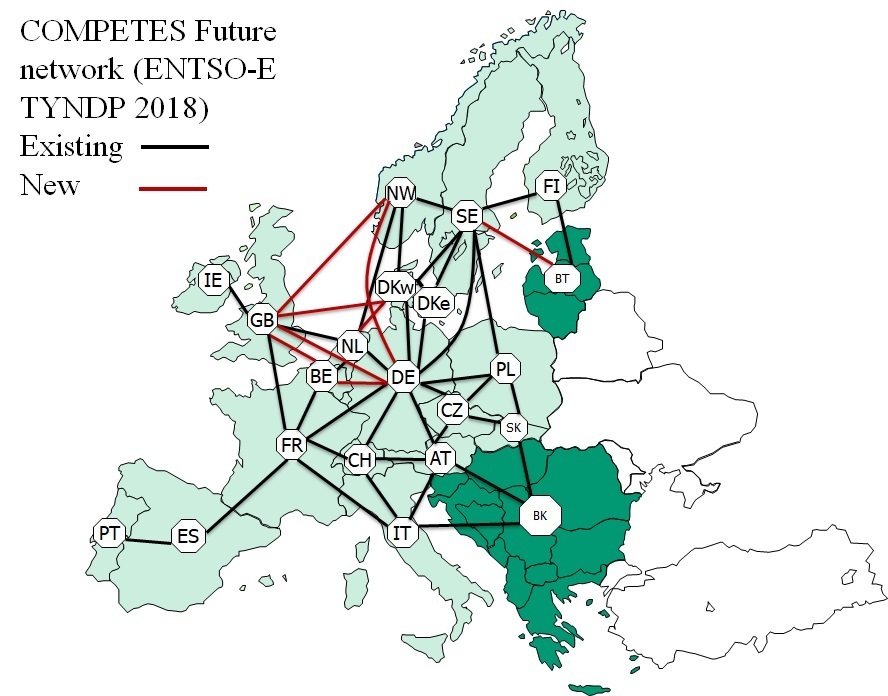
The COMPETES electricity market model
At PBL, the Netherlands Environmental Assessment Agency, AIMMS is used to model the European electricity market. We use this model for outlooks of future electricity market developments and to analyse policy impacts such as the impact of CO2 taxes on electricity generation and prices.
COMPETES is a power system optimization tool that seeks to minimize the total power system costs while accounting for the technical constraints of the generation units, transmission constraints between the countries and the generation capacity expansion for conventional technologies. The model covers 28 EU member states and some non-EU countries (i.e., Norway, Switzerland, and the Balkan countries), including a representation of the cross-border transmission network interconnecting these European countries. There are 11 types of fossil-fuel fired power plants as well as nuclear, geothermal, biomass, waste, hydro, wind and solar technologies; unit by unit generation is detailed for the Netherlands, while all other countries are aggregated by fuel type and year.

COMPETES can be used to perform hourly simulations for two types of purposes: a generation capacity expansion model formulated as a linear program to optimize capacity additions in the system and a unitcommitment (UC) model formulated as a mixed integer program taking into account flexibility, minimum load constraints, and start-up costs of generation technologies.
Costs and benefits of renewable energy subsidies
We address the question of how policies that subsidize renewable energy impact the mix of renewable investments, electricity costs, renewable share, the amount of subsidies, and consumer prices in the EU electric power market in 2030. Our analysis is unique in considering a realistic landscape of diverse and time-varying loads and renewable resources (including existing and potential hydro, wind, and solar resources), as well as fossil-fueled generators and network constraints.
See our Cambridge University Energy Policy Research Group Working Paper, which includes a mathematical description of the model.
Özge Özdemir, Benjamin F. Hobbs, Marit van Hout, and Paul Koutstaal, 2019, Capacity vs Energy Subsidies for Renewables: Benefits and Costs for the 2030 EU Power Market.
Cambridge University EPRG Working Paper 1911

 Thanks for posting
Thanks for posting